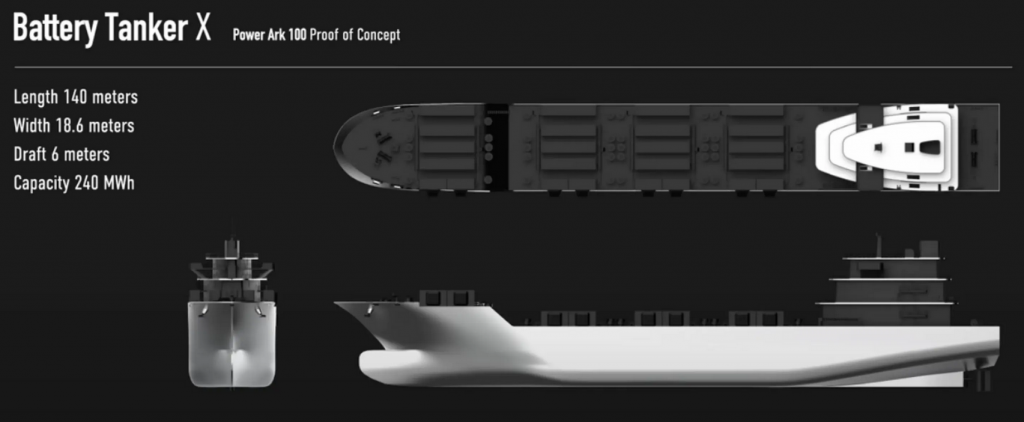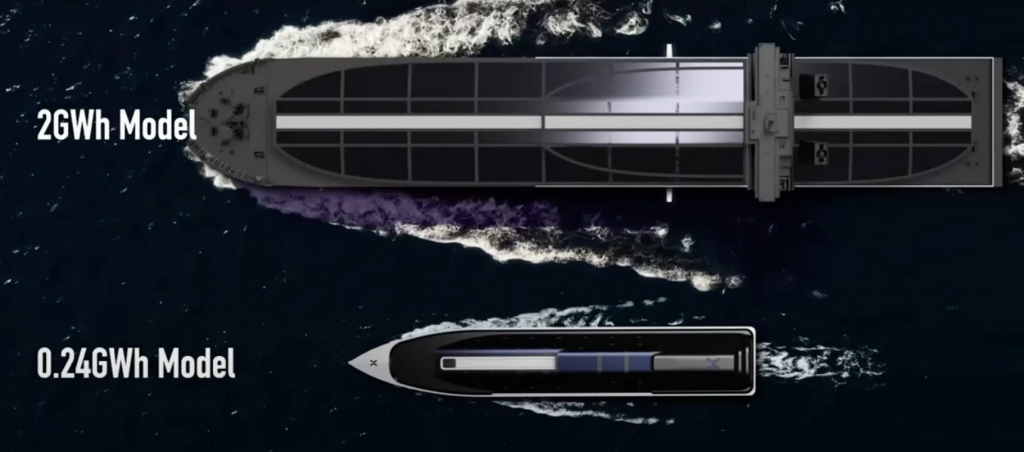PowerX, a Japanese company, is progressing with its unconventional plan to construct a “mobile power station” in the form of an electric “battery tanker” measuring 140 meters (460 ft) in length. The primary objective is to transport 241 megawatt-hours of renewable energy across short distances by sea.
Renewable energy is often generated far away from the areas where it is most needed. Thus, the company proposes the construction of an electric ship solely dedicated to carrying batteries to those very places.
PowerX points out that Japan is surrounded by deep seas, and prone to earthquakes, and says in a press release that “the ship-based solution resolves issues such as long downtime from undersea cable malfunctions and repairs, as well as the high costs associated with ultra-high voltage connections and substations.”

PowerX, with its existing battery factories, seems inclined towards this approach. The prototype, named “Battery Tanker X,” is relatively small and equipped with 96 container-sized lithium-iron-phosphate battery modules, along with controllers and charge units.
However, due to the drag caused by water, battery-powered electric propulsion systems struggle to navigate long distances. Consequently, the prototype’s maximum range is limited to 300 km (186 miles) to ensure it remains economically feasible.

In the future, PowerX envisions a full-scale production model, referred to as the “Power Ark,” which could transport approximately 4,190 GWh of electricity annually from renewable sources in Hokkaido to meet demand in Aomori, a distance of just 100 km (62 miles).
This plan would utilize existing transmission infrastructure, which will soon be abandoned as fossil fuel-based generation capacity diminishes.
By deploying four ships continuously on this route, PowerX estimates the cost of power transport to be around US$0.17 per kWh, potentially benefitting renewable power, distribution, and retail companies.
Safety measures are a top priority for PowerX. The ships will be equipped with gas emission control and fire suppression mechanisms, given the significant risks associated with lithium battery fires.

The full-scale Power Ark will be much larger than the prototype and capable of carrying eight times the amount of lithium, totaling a massive two gigawatt-hours of stored energy. Such a battery fire at sea could have catastrophic consequences.
Furthermore, the environmental implications of this concept are questionable. Unless these ships are constructed using carbon-neutral green steel, the amount of clean energy required to transport clean energy may undermine its environmental benefits.
Nevertheless, PowerX sees a viable business case and has established a subsidiary named “Ocean Power Grid, Inc” to commercialize this technology. With a detailed prototype design already completed, the company aims to have the Battery Tanker X constructed by 2025, followed by domestic and international field testing in 2026. Currently, PowerX has secured over US$70 million in funding and is forging partnerships to support this endeavor.


